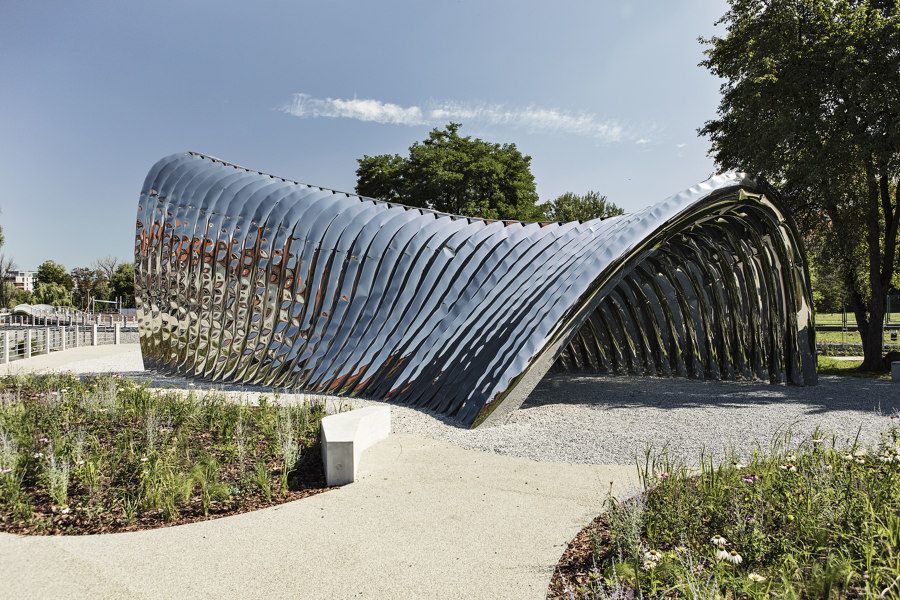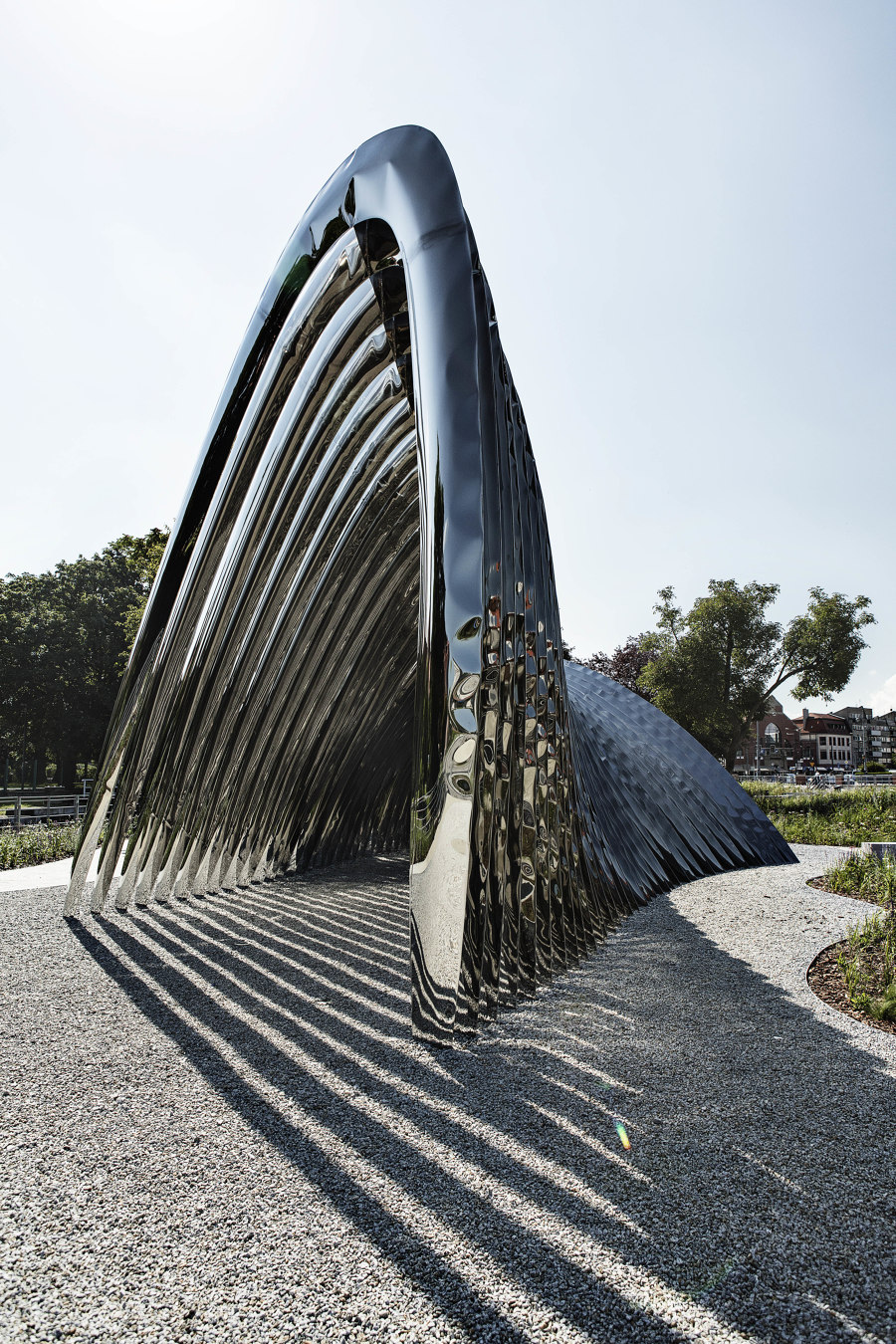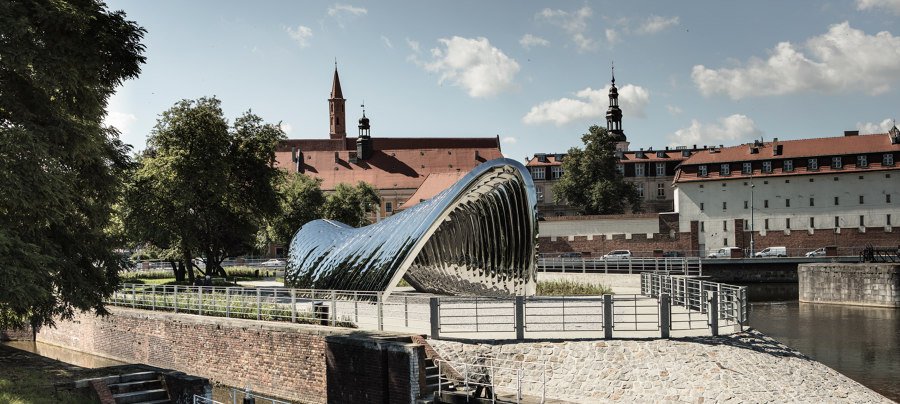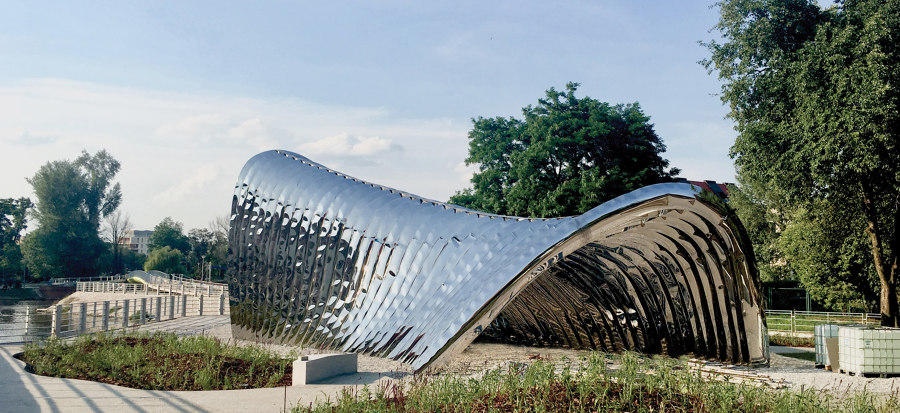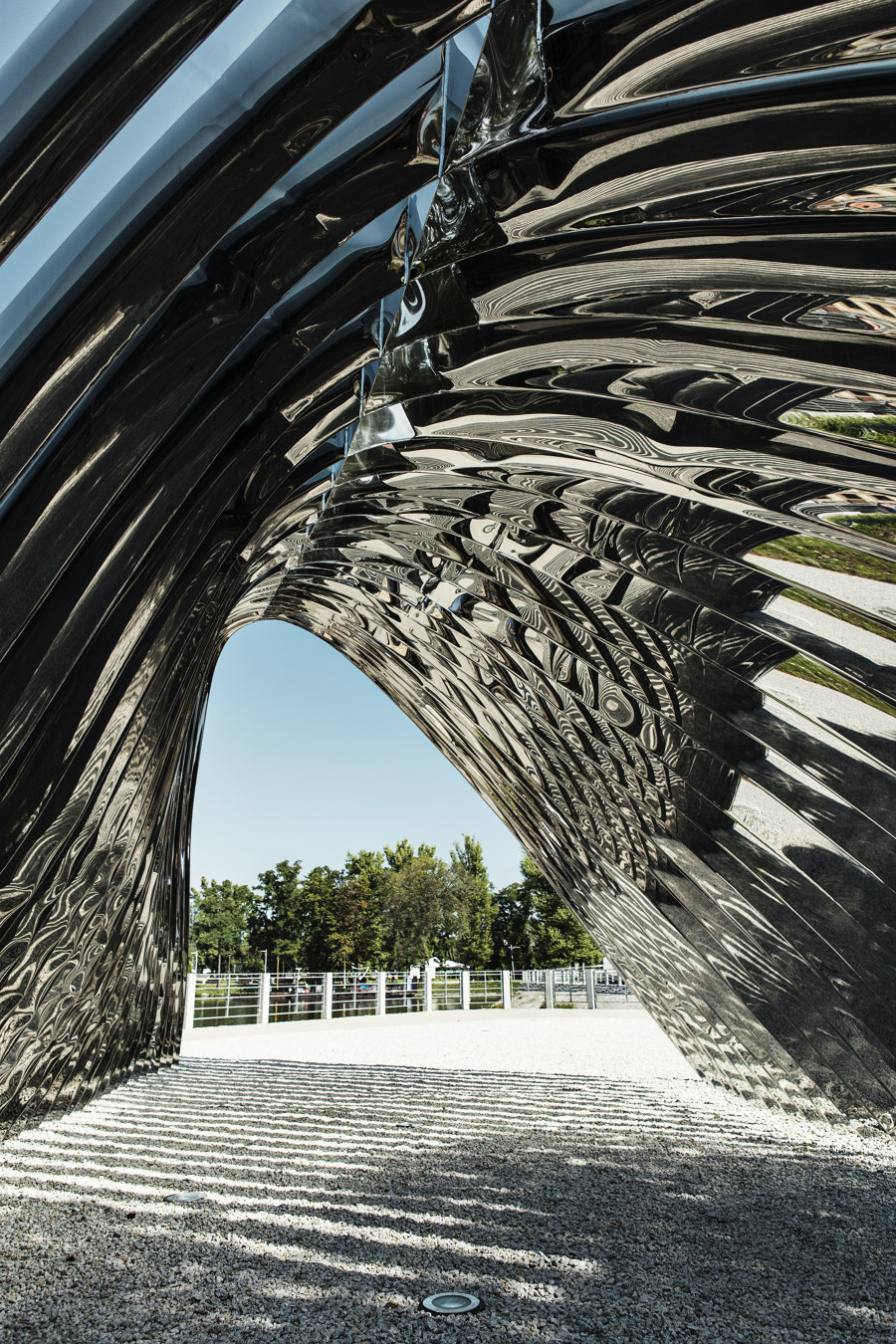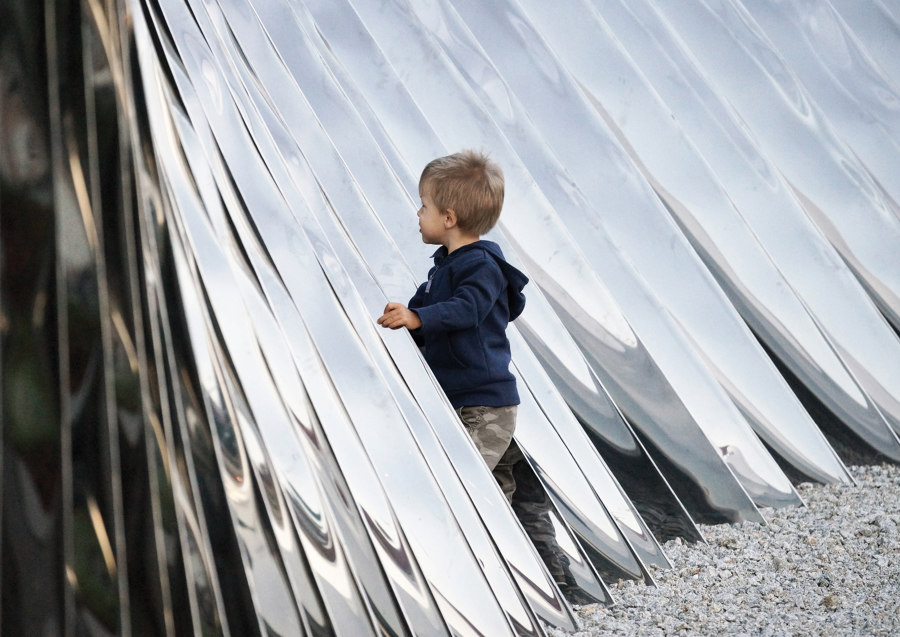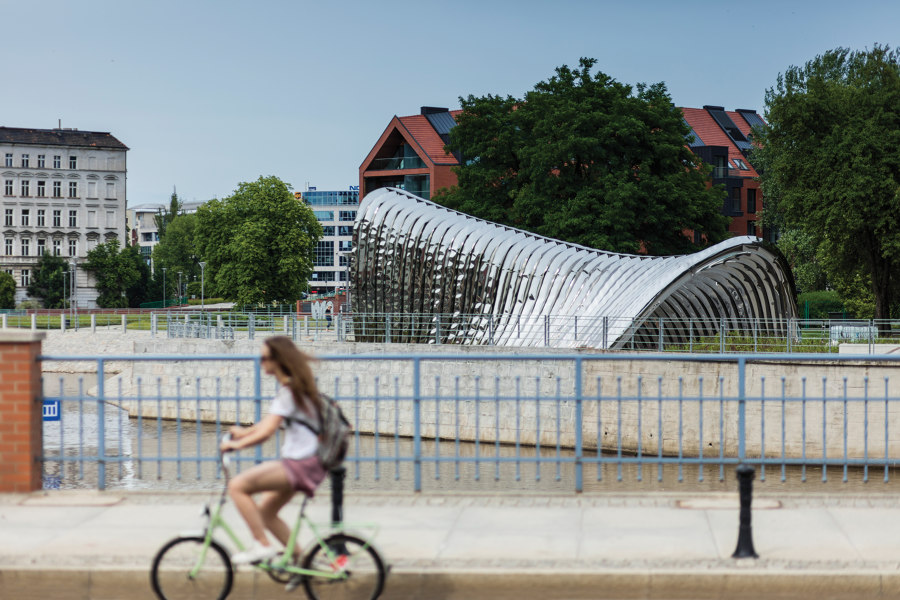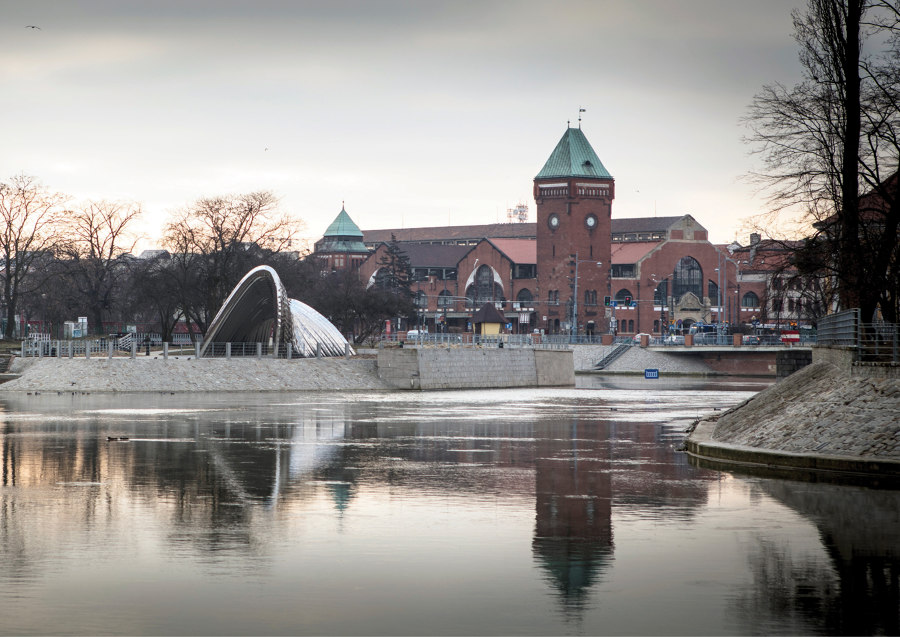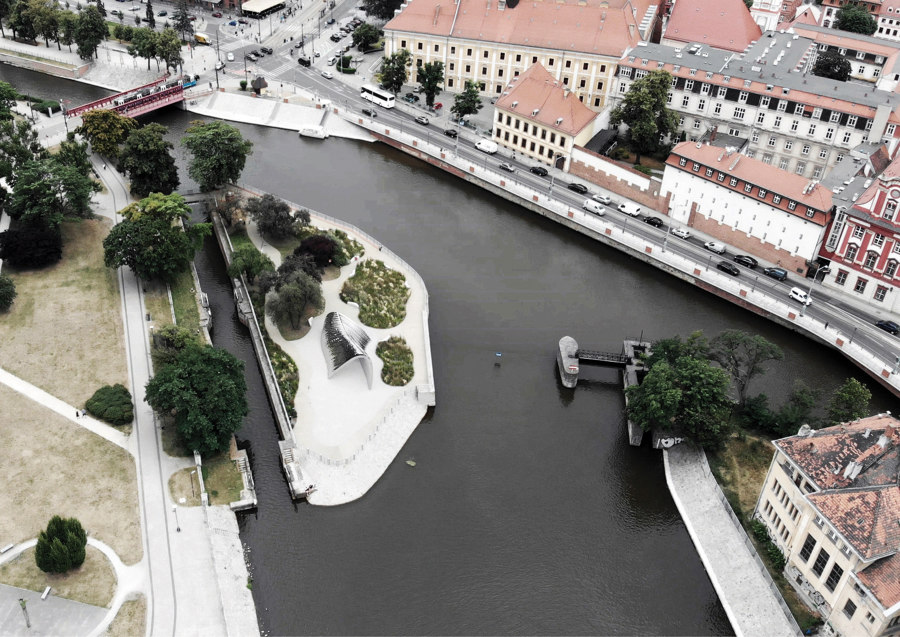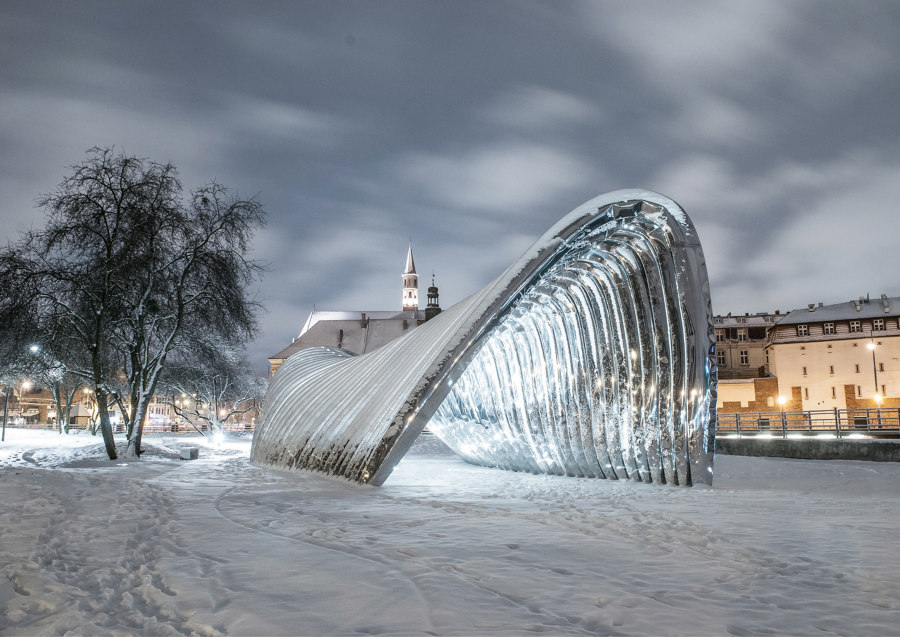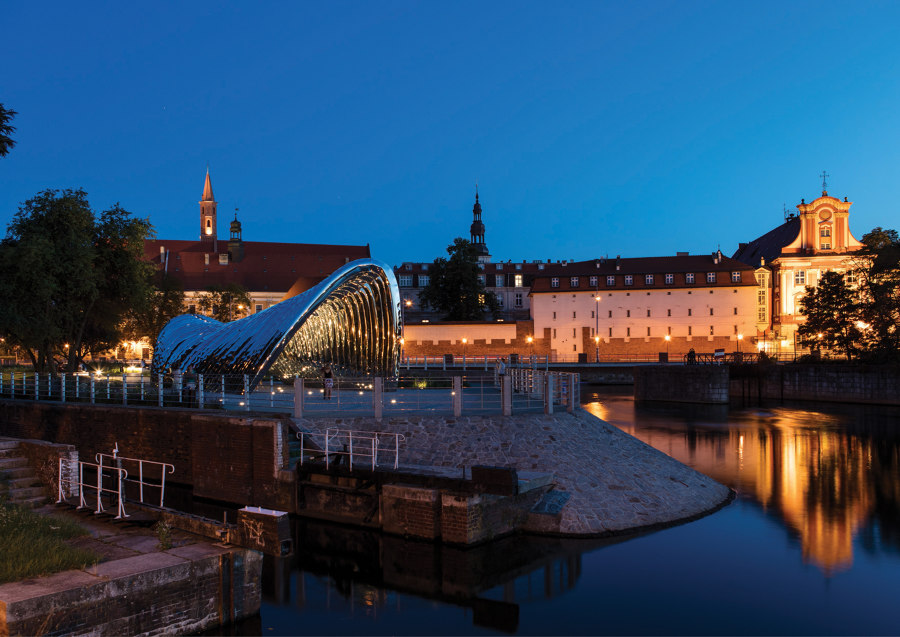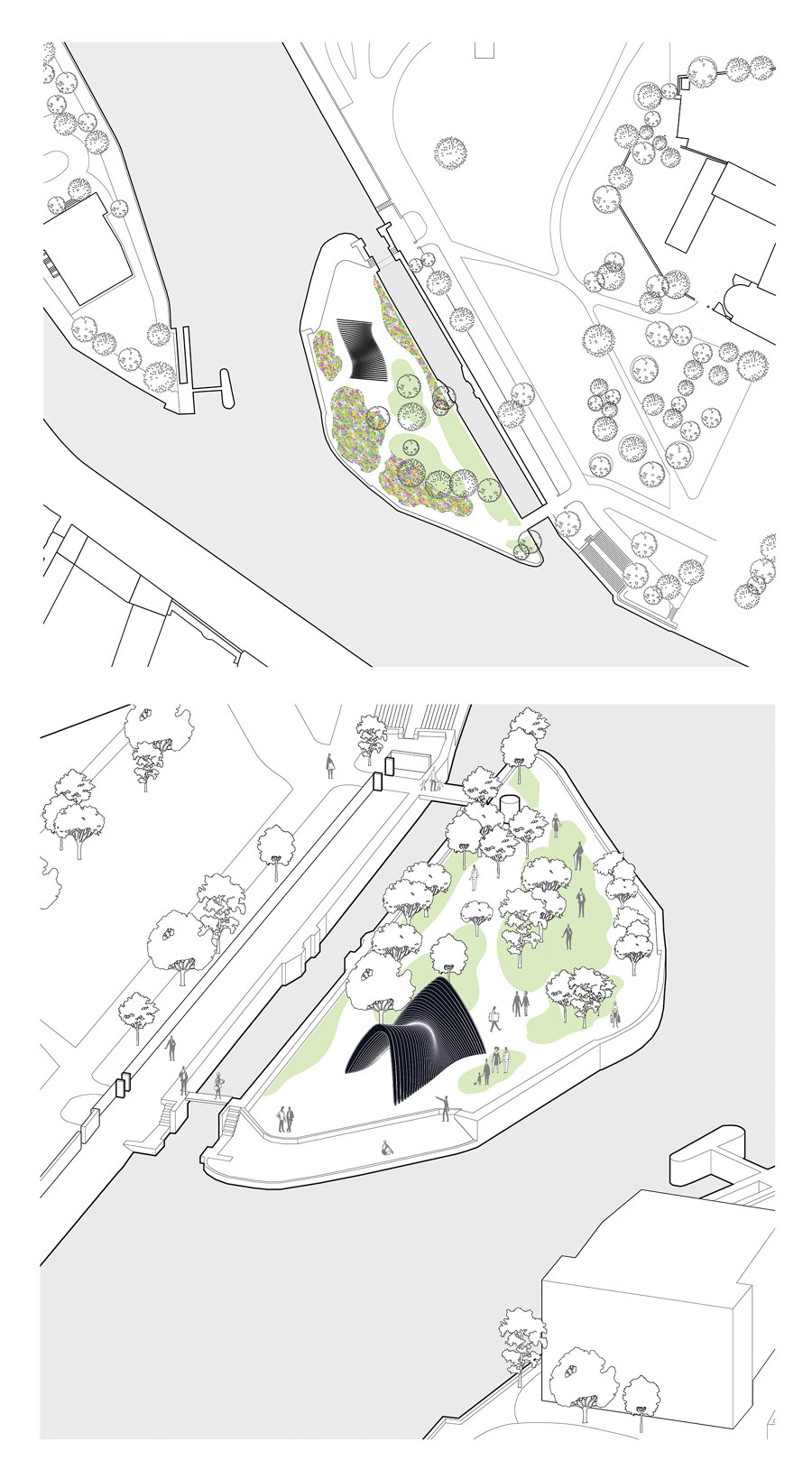NAWA is an ultralight, durable construction made up of 35 FiDU steel arches. Put together they create an open portal easily accessible from all the sides. Bionic form and high polished surface that reflects the surroundings create the effect of naturally growing sculpture. NAWA’s look is constantly changing through the day and gives an amazing game of lights at any time.
The NAWA sculpture is erected on Daliowa Island – the smallest of over a dozen islands in Wrocław is situated in the primal current of the Odra river and is surrounded by both lush greenery and historic architecture. In the recent years it has been almost forgotten. Today, thanks to the NAWA sculpture, set up as part of the European Capital of Culture, the island can be re-born and remind the citizens of Wrocław about its presence.
NAWA is a part of Daliowa Island revitalization which includes turning the island into a place full of greenery which would at the same time be a meeting place in the city centre. NAWA sculpture perfectly embodies these assumptions. It does not ruin the natural character of the island and simultaneously it is an articulate and attention-grabbing urban element in Wrocław.
Since unveiling in June 2017, the sculpture has been gaining recognition in architectural circles, attracting the attention of critics and the most influential magazines around the world. At the finale of Architektura-Murator magazine’s competition it was awarded the most innovative Polish architectural project of 2017.
In December 2018, NAWA has been announced as one of Dezeen’s top 10 architectural pavilions in 2018 and was nominated for the European Union Prize for Contemporary Architecture - Mies van der Rohe Award 2019 - one of the most important and prestigious architectural awards in the world.
The organic arches are the result of parametric design. This innovative domain operating in architecture, engineering and city planning relies on software which allows to generate blocks on the basis of combined input of parameters. During the process of computer shaping, forms are generated, which surprise the creator of the sculpture himself. Thanks to the initial parameters, the final shapes fulfill practical goals, such as optimal size, weight, adaptation to the environment.
The weight of the ultralight construction was possible thanks to FiDU – the innovative technology invented by Oskar Zięta. It allows to distort the shapes of steel elements welded together. Thanks to “inflating” it with compressed air, the metal forms become durable and stable, maintaining its lightness at the same time. NAWA is the first FiDU construction on such a large scale. Therefore, it will become a manifesto of this innovative technology.
Operating on the intersections of art, design and science, Oskar Zięta reaches beyond the traditional definition of an artist. During his sculpting process, the form is created with the use of digital manipulations. The initial vision of the construction of the sculpture was translated to digital language, which allowed to count the durability of its elements.
NAWA’s construction is based on the arches. Looking through the perspective of an architect, an arch is a perfect structure used in antique and gothic buildings. The invention of the arch was an immense breakthrough in the architecture and allowed to build tapered constructions. In the NAWA sculpture, arches serve both as the elements of construction and artistic ways of expression.
The arch was the main research object for Jean Prouvé – the famous French designer and constructor, as it constituted an optimal form for the modern constructions. It allowed for the effective exploitation of resources and made the production process relatively easy. NAWA is the manifesto of the innovative use for the traditional arch form, which was made possible by FiDU technology.
NAWA was born in a special place – former shipyard. This choice was determined by the size of the sculpture which required unusually large production hall and also easy access to the Odra river. “For months elements of NAWA were cut, welded and then blown with air. The vast majority of works took place in the production hall. Thanks to that we could save time during the installation on the Daliowa Island. The long hours of hard work paid off when we saw the final effect”, says Oskar Zięta.
Extraordinary projects require extraordinary solutions. Because of that we used a special method to transport arches of NAWA. All of the elements were carried from the production hall to the Daliowa Island on barges. Citizens of Wroclaw could witness this spectacular journey from the streets, bridges and bank of the Odra river.
Paradoxically, in Wroclaw, city famous from its number of bridges and known as the Venice of the North, inland water transport has lost its popularity over the last few years. Hopefully, such a spectacular project will help in restoring it and bring Odra river back to life.
Construction and assembly works have begun in April. Prior to that builders and surveyors were preparing ground at the Dailowa Island for several weeks. NAWA was transported in parts and then put together on the island. Due to this solution works resembled an installation and took much less time.
NAWA opens another chapter in the history of the Daliowa Island, returning it to the dwellers of Wroclaw. The space became a bustling, open space for meetings, concerts and artistic events. Sculpture along with planned vegetation will create a consistent organic unity, emerging naturally from the river. At the same time, the realization will fit perfectly into the architectural order of the area and its vibrant life, full of tourists and passers-by.
Facts
- Dimensions: 7,5m x 10m x 11m
- Weight: 11,2t
- Around 1 000m3 of air were used to inflate the arches
- Production process took about 700 hours of work.
- Combined length of weld totals 2 kilometers.
- Elements were carried on 3 barges on Odra river to the final destination
- Around 7500 new plants was seeded on Daliowa Island around the sculpture
Design Team:
Oskar Zięta
